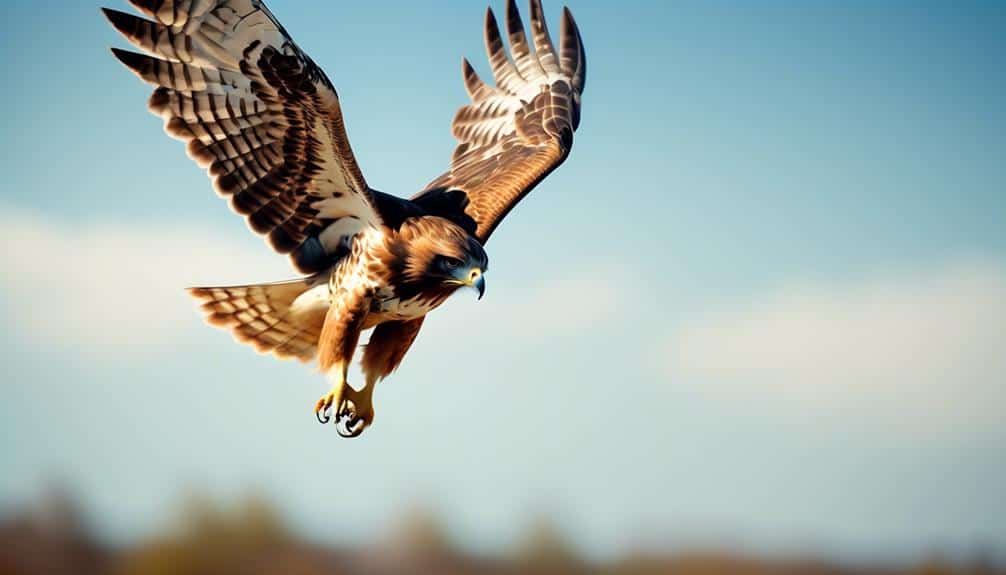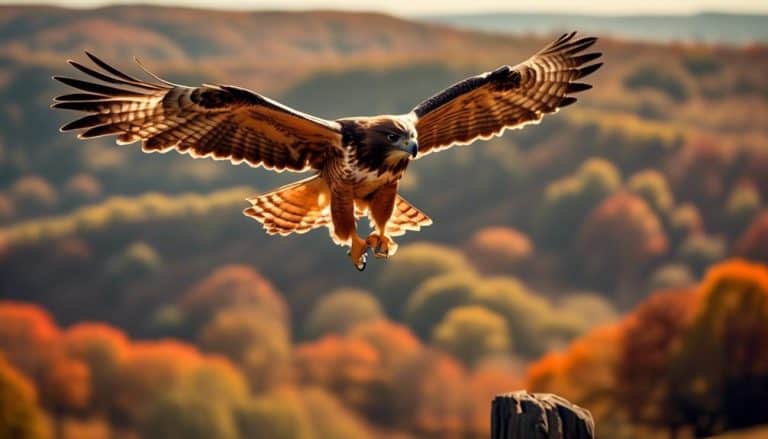As I gaze upon the vast expanse of North Carolina's skies, it is as if I am witnessing a symphony of untamed beauty.
The birds of prey gracefully soar through the air, their wings outstretched like majestic painters creating vivid strokes against the canvas of the heavens.
These magnificent creatures possess a power and grace that captivates the imagination, leaving one in awe of their abilities.
But what is it that makes these birds of prey so fascinating? What secrets do they hold within their wings?
Join me on a journey as we unravel the mysteries of North Carolina's avian predators and discover the unique roles they play in our ecosystem.
Bald Eagle: The Iconic Symbol of North Carolina
The Bald Eagle, a majestic bird of prey, is widely recognized as the iconic symbol of North Carolina. This magnificent species has a long history of conservation efforts in the state, which have resulted in significant population growth over the years.
Bald eagle conservation efforts in North Carolina have been focused on protecting their habitats, reducing threats, and promoting awareness. These efforts have played a vital role in the recovery of the species, which was once on the brink of extinction. Thanks to the dedicated work of conservation organizations and government agencies, the population of Bald Eagles in North Carolina has steadily increased.
The primary factor contributing to the population growth of Bald Eagles in North Carolina is the preservation and restoration of their habitats. Efforts have been made to protect and manage areas such as coastal marshes, rivers, and lakes, which provide essential nesting and foraging sites for the eagles. Additionally, the reduction of pollution, particularly the banning of harmful pesticides like DDT, has also positively impacted the Bald Eagle population.
Monitoring programs have been implemented to track the population trends of Bald Eagles in North Carolina. These programs involve regular surveys and nest monitoring to assess breeding success and population size. The data collected from these efforts help inform conservation strategies and ensure the continued growth of the Bald Eagle population.
Peregrine Falcon: The Speedy Hunter of the Skies
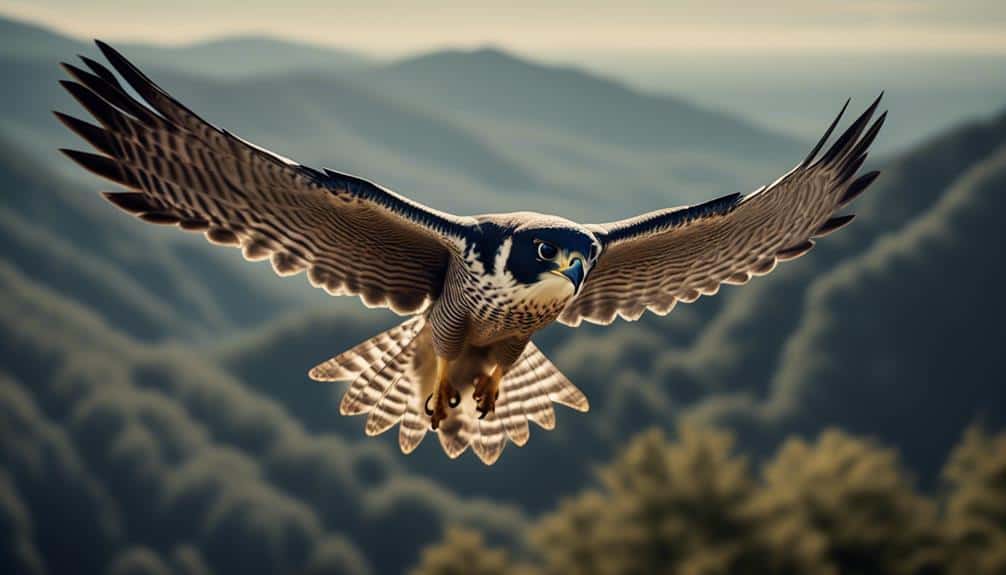
As a passionate bird enthusiast, I am excited to delve into the fascinating world of the Peregrine Falcon, a formidable and swift predator that rules the skies. Peregrine falcons are known for their incredible speed, reaching speeds of up to 240 miles per hour during their breathtaking hunting dives, or stoops. These birds have a unique hunting behavior, utilizing their exceptional eyesight to spot their prey from high above and then stooping down with incredible precision to strike their target.
Peregrine falcons are renowned for their conservation efforts. Due to their decline in the mid-20th century as a result of pesticide use, extensive conservation efforts were put in place to protect these magnificent creatures. These efforts included banning harmful pesticides and establishing captive breeding programs. Thanks to these conservation initiatives, the Peregrine Falcon population has made a remarkable recovery, and they are now considered a conservation success story.
To illustrate the beauty and power of these birds, let's take a look at the table below:
| Column 1 | Column 2 | Column 3 |
|---|---|---|
| Speed | Precision | Hunting technique |
| 240 mph | Exceptional | Stooping |
| eyesight |
The Peregrine Falcon's behavior and conservation efforts make it an incredible species to study and admire. Its unparalleled speed and hunting prowess are a testament to the wonders of nature.
Red-tailed Hawk: The Master of Aerial Acrobatics
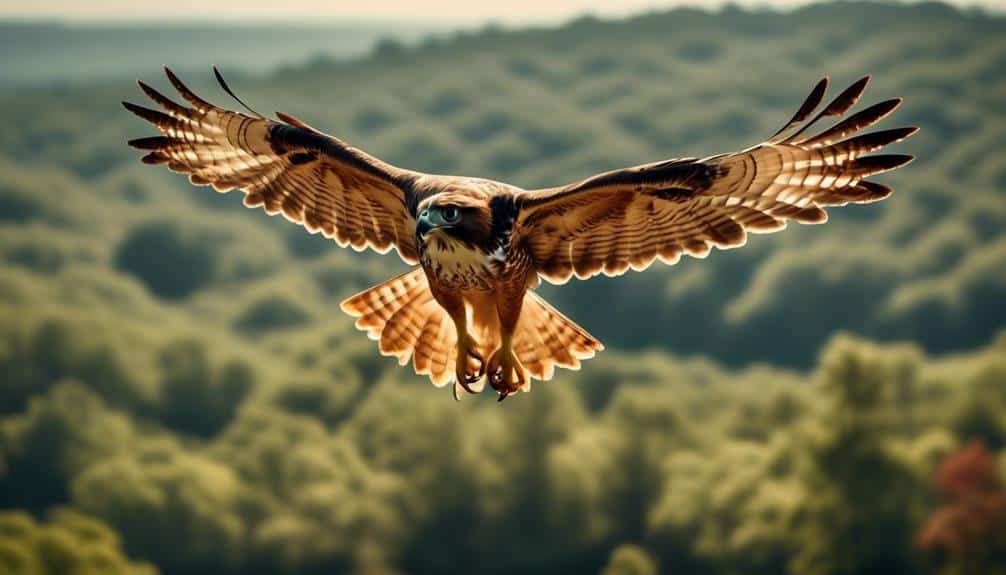
After exploring the remarkable speed and hunting abilities of the Peregrine Falcon, it's now time to turn our attention to the awe-inspiring aerial acrobatics of the Red-tailed Hawk. As one of the most common and widely distributed birds of prey in North America, the Red-tailed Hawk is known for its distinctive red tail feathers that are visible when it soars through the sky.
Here are some fascinating details about the breeding habits and hunting techniques of this magnificent raptor:
- Breeding Habits:
- The Red-tailed Hawk typically builds its nest high up in the trees, often reusing the same nest year after year.
- The female hawk lays 1-3 eggs, with an incubation period of about 28-35 days.
- Both parents take turns incubating the eggs and feeding the hatchlings.
- Hunting Techniques:
- The Red-tailed Hawk primarily hunts small mammals, such as mice, voles, and rabbits, but it's also known to prey on birds and reptiles.
- It employs a variety of hunting techniques, including soaring, perching, and sometimes even hovering.
- When hunting, the hawk uses its exceptional eyesight to spot its prey from above and then swoops down with great speed and accuracy to catch it.
The Red-tailed Hawk's breeding habits and hunting techniques make it a truly remarkable bird of prey. Its ability to perform aerial acrobatics while hunting is a testament to its adaptability and skill in the wild.
Great Horned Owl: The Silent Predator of the Night

What makes the Great Horned Owl such a formidable predator in the darkness of the night?
As a silent predator and a night dwelling hunter, the Great Horned Owl possesses a unique set of adaptations that allow it to excel in its nocturnal hunting endeavors.
One of the key factors that contribute to the Great Horned Owl's success as a silent predator is its specialized feathers. These feathers have serrated edges, which help to break up the airflow and reduce the noise produced during flight. This enables the owl to approach its prey with stealth, ensuring a higher chance of success.
Furthermore, the owl's large and forward-facing eyes play a crucial role in its ability to hunt in low light conditions. The eyes are equipped with a high density of light-sensitive cells called rods, which enhance the bird's night vision. Additionally, the owl has a unique structure called the tubular eye, which allows for a greater concentration of light onto the retina, further improving its ability to see in the dark.
In addition to its exceptional vision, the Great Horned Owl possesses acute hearing capabilities. Its facial disc, a circular arrangement of feathers around the face, acts as a sound reflector, channeling sounds towards the owl's ears. This allows it to accurately locate prey, even in complete darkness.
With its silent flight, keen eyesight, and acute hearing, the Great Horned Owl is truly a master of the night. Its adaptations make it a formidable predator, capable of hunting successfully in the darkness, ensuring its survival and dominance as one of North Carolina's most iconic birds of prey.
Osprey: The Fish-catching Specialist
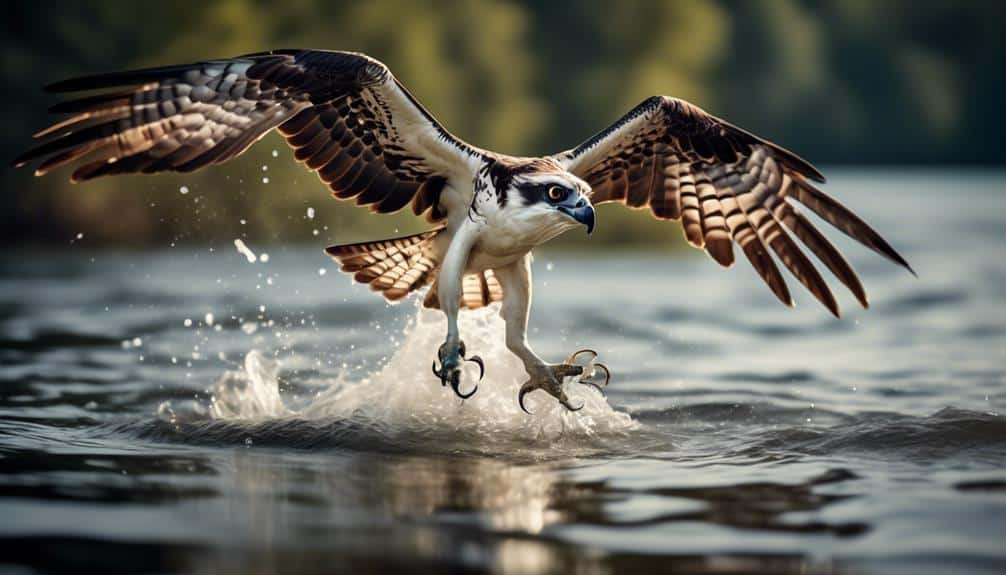
The Osprey, a magnificent bird of prey found in North Carolina, possesses unique adaptations that make it a highly skilled fish-catching specialist. With a wingspan of up to six feet, the Osprey is a formidable hunter both in the air and underwater. Its distinctive adaptations allow it to thrive in its fish-rich habitat.
Some key features and behaviors of the Osprey include:
- Sharp talons: The Osprey's powerful, curved talons enable it to firmly grip fish while in flight. These talons are perfect for catching slippery prey.
- Reversible outer toes: Unlike other raptors, the Osprey can reverse one of its outer toes, which allows it to have a better grip on its catch while flying.
- Diving capabilities: The Osprey is well-known for its ability to dive into the water from great heights. It can adjust the position of its wings to reduce resistance and make a swift entry into the water.
In addition to its exceptional fishing skills, the Osprey also exhibits interesting migration patterns. These birds undertake long-distance migrations, traveling from North Carolina to South America during the winter months.
To ensure the conservation of the Osprey population in North Carolina, various conservation efforts have been implemented. These include the establishment of protected nesting sites and the monitoring of breeding success. Researchers and volunteers work tirelessly to track the migration patterns of Ospreys, which helps in understanding their population dynamics and ensuring their continued survival.
Frequently Asked Questions
What Is the Average Wingspan of a Bald Eagle in North Carolina?
The average wingspan of a bald eagle in North Carolina is approximately 6 to 7 feet. These majestic birds are known for their impressive size and can be found in various habitats throughout the state.
How Many Eggs Does a Peregrine Falcon Typically Lay in a Year?
In a typical year, a peregrine falcon lays an average of 3-4 eggs. These magnificent birds, known for their impressive speed and hunting skills, contribute to the thriving peregrine falcon population in North Carolina.
What Is the Maximum Speed That a Red-Tailed Hawk Can Reach During Its Aerial Acrobatics?
When it comes to the maximum speed of a red-tailed hawk during its aerial acrobatics, it is truly impressive. These magnificent birds can reach speeds of up to 120 miles per hour.
How Does the Hunting Behavior of a Great Horned Owl Differ From Other Owl Species in North Carolina?
Comparative study shows that the hunting behavior of the great horned owl differs from other owl species in North Carolina. Their feeding habits are unique, as they actively hunt larger prey, including rabbits and small mammals.
What Is the Success Rate of an Osprey When It Dives Into the Water to Catch a Fish?
When an osprey dives into the water to catch a fish, its success rate depends on several factors such as the accuracy of its dive, its hunting technique, and the availability of prey.
Conclusion
In conclusion, the birds of prey in North Carolina are truly remarkable creatures.
Like the majestic Bald Eagle, they soar through the skies with grace and power, hunting their prey with remarkable speed and precision, much like the Peregrine Falcon.
Their aerial acrobatics, as displayed by the Red-tailed Hawk, are a sight to behold.
And let's not forget the silent predator of the night, the Great Horned Owl, who hunts its prey with silent efficiency.
These birds, like the Osprey, are specialists in their own unique ways, making North Carolina a haven for bird enthusiasts and nature lovers alike.

